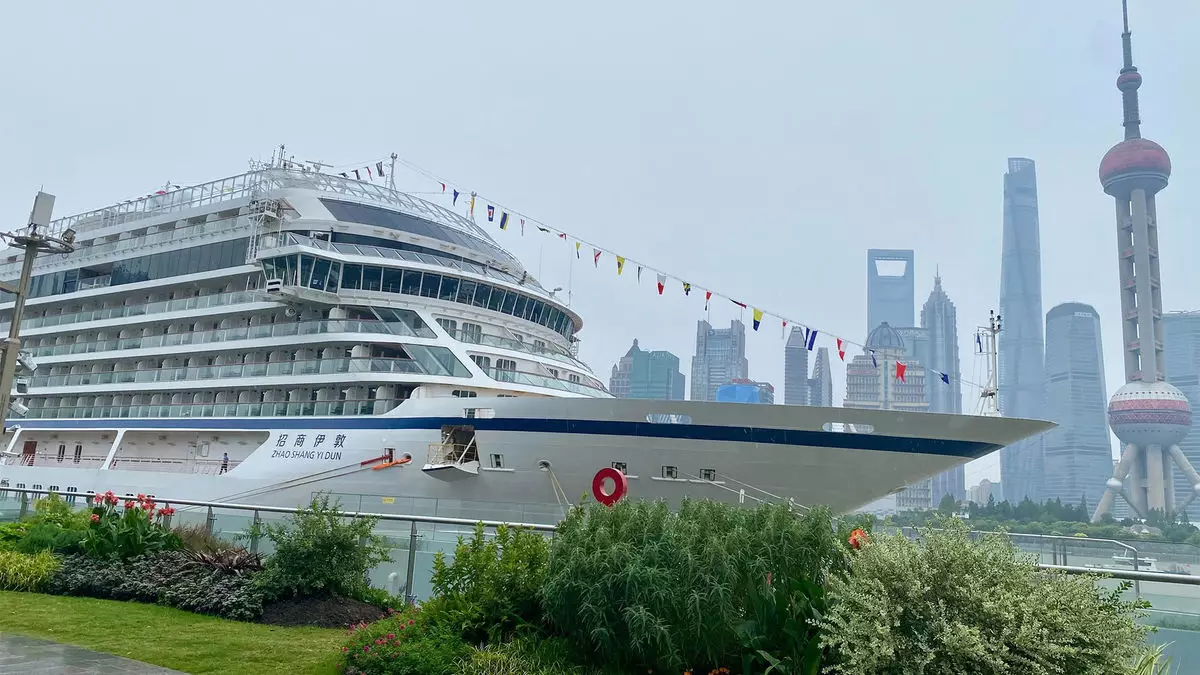In a bold move to revitalize cruise travel in China, Viking recently embarked on its inaugural ocean cruise catering exclusively to English-speaking travelers. The journey, which started in mid-September aboard the newly named Yi Dun, marks a significant milestone for the cruise line, having transitioned from river to ocean voyages after the pandemic-induced hiatus. The Viking Yi Dun offers a fascinating itinerary along the stunning coasts of the East and South China Seas, visiting bustling ports like Shanghai, Shenzhen, and more. As Viking seeks to establish itself in this unique market, it is essential to consider the implications of their approach on the cruise industry.
Viking’s strategy is particularly compelling given the recent history of tourism in China, which has seen a sluggish recovery following the pandemic. Despite being slow to reopen compared to other tourist destinations, Viking’s decision to introduce English-speaking cruises is a commendable attempt to entice Western travelers back to the region. Solutions such as unique itineraries that blend local culture with Western preferences could potentially redefine the cruise experience in an evolving marketplace.
The design and ambience of the Yi Dun pays homage to Viking’s signature Nordic style, while simultaneously incorporating elements of Chinese culture. Guests encounter a wealth of Chinese culinary options, along with artistic showcases throughout the ship. Viking has made concessions to appeal to local tastes, allowing families to travel together, thus embracing the prevalent familial vacation culture within China. However, Viking’s adaptation has not come without criticism; the delicate balancing act between maintaining Viking’s brand identity and catering to Chinese preferences poses questions about long-term viability.
Viking’s COO, Mike Estill, raised an important point regarding the unique dual-target market of American and Chinese vacationers. Each demographic comes with distinct expectations and preferences, particularly concerning ship amenities and entertainment options. The absence of casino facilities—a mainstay in Chinese cruises—highlights this divergence. Instead, the Yi Dun emphasizes relaxation and cultural exploration, potentially appealing to travelers seeking a serene getaway rather than gambling and nightlife.
As Viking navigates these new waters, it faces considerable challenges and opportunities. The cruise industry has been notoriously fragmented in developing unique products that cater to specific markets, especially one as complex as China. Many cruise lines typically focus on high-demand regions and popular attractions, making Viking’s distinctive offerings noteworthy. However, establishing a successful cruise itinerary in China comes with its hurdles, especially as the conventional travel landscape undergoes changes in how people view tourism post-pandemic.
Despite the nominal success of early bookings reported by CEO Torstein Hagen, Viking’s long-term success in China is still uncertain. Estill described the venture as an experiment. Inbound tourism is recovering at different rates in various regions, and while demand for travel to China is gradually rising, it remains below pre-pandemic figures. Viking’s research into these dynamics significantly influences its strategies, and their ongoing adaptations will determine the resilience of their offerings in this new market landscape.
The emphasis on cultural immersion throughout the Yi Dun’s itinerary is particularly noteworthy. Onboard, guests are treated to authentic Chinese dining experiences, including local delicacies and street food themes, providing a gastronomic journey that reflects the country’s vibrant heritage. On-shore excursions are tailored to facilitate deeper cultural connections, featuring martial arts performances and visits to historical sites like temples and tea plantations. This commitment to cultural authenticity enhances the overall travel experience and enriches guests’ understanding of China.
Furthermore, employing crew members with a strong connection to the local culture deepens this engagement. While some language barriers persist, the enthusiastic and hospitable crew plays a crucial role in creating a welcoming environment. The decision to use proficient local guides for excursions further ensures that guests can navigate these experiences seamlessly.
As Viking eyes the future, it plans to revisit its English-speaking cruise offerings from September to November 2025, promising potential improvements and longer itineraries. This flexible approach to market dynamics could ultimately sow the seeds for a robust cruise segment catering to diverse customer needs. The intermingling of cultures aboard the Yi Dun represents not just a successful launch, but a bold step into an ever-changing landscape of global travel.
Viking’s ventures in the Chinese cruise market showcase innovation amid adversity. The experiment might still be in its infancy, but with careful navigation and continuous adaptation, Viking has the potential to redefine cruise experiences for a broader audience, bridging gaps and fostering connections across continents. This could very well pave the way for the future of cruising in the dynamic landscape of Chinese tourism.

